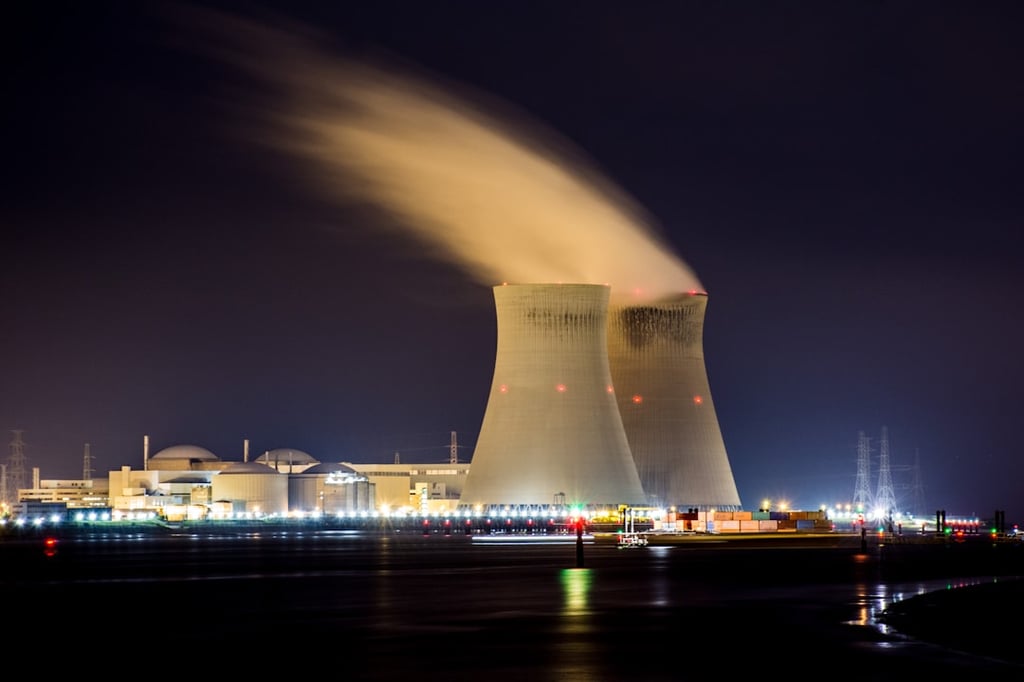See also: Top RPA Companies
And: Benefits of RPA
Robotic process automation enables businesses to automate underlying processes, freeing up workers to focus on higher value tasks. It’s a rapidly growing technology that ties into machine learning, artificial intelligence and intelligent automation.
- What is robotic process automation and how are businesses using it? Why is it getting so much attention?
- What are the key challenges for using RPA? For what business situations is it better suited?
- What’s the near term of future of automation and RPA, and how can businesses prepare for this?
To provide insight into RPA, I spoke with Burley Kawasaki, Chief Product Officer at K2.
Download the podcast:
First, let’s talk about RPA, what it is and how businesses are using it. (4:39)
Well, RPA is certainly getting a ton of hype. I follow a lot of technologies and trends but RPA is getting a lot more hype than most. RPA solves a very specific problem that is very timely. There’s a lot of manual tasks that people can’t or don’t want to complete and RPA is really good and well-suited for highly repetitive tasks, automating them, taking key strokes, entering into either websites or systems and completely automating them.
So the nice thing about it is that it’s very focused and has a really sort of quick ROI for a lot of cases. I think, though, people have seen so much of the hype, especially with the term robotic with RPA, that it sort of… I think of the saying, when you’re a hammer, everything looks like a nail.
People have then taken RPA and tried to say, “Oh I can solve all these different things.” Some of them, maybe they shouldn’t be trying to solve with RPA. And so I would caution people, it’s a good tool in the toolbox, but just like you wouldn’t use a hammer for everything, you might need a wrench, a saw, a crowbar. Knowing how to choose the right tools as part of an overall strategy is important.
Examples in the Real World
“So one really important thing that it does, I think, for a lot of customers it solves a need, is older technologies don’t get replaced that quickly. Everyone thought the mainframes would go away, it turns out a lot of them are still around.
“And so what RPA does well is it helps bridge across technology generations. So if you have an older application that doesn’t have restful APIs or easy ways to integrate, but you can still essentially emulate the keystrokes to type into a user interface, RPA can do that. And so, for companies that are trying to integrate with older applications, it is a very good solution.
“I’ll use an example. One of our customers down in New Zealand, actually, manages funds for large corporate clients, and so they have a pretty comprehensive on-boarding process when they bring a new client on. There’s a lot of paperwork, there’s a lot of information about the funds and all of what they’re allowed to do or not, to manage on your behalf. And as you can imagine, that creates a lot of re-entry of data and lot of them are tedious and so one of our customers implemented a solution that used RPA to essentially eliminate all the key entry that happened.
“That allowed, from a customer satisfaction standpoint, a lot of positive things. They could spend more time with their client advising them as opposed to spending a lot of time just on entry of data, and they were able to see more clients. They saw, I think an overall 50% increase in the number of applications that they could handle on a weekly basis.”
What are the key challenges with RPA?
“Well I think the biggest challenge is, it doesn’t look at the whole process. An RPA task is really good at a step in the process and automating that. But if you think about a process… Let’s take a different one like filing a claim if you have a car accident. There’s a much longer process. Entering some information into one system is only one step out of 500.
“So the end-to-end process that cuts across different systems, cuts across people, cuts across all sorts of different sources of data, that’s something that RPA doesn’t address well. And that’s the bigger, I would say, strategy that our clients need to look at and think about when it comes to intelligent process automation.
“The nice thing about RPA is it can be rolled out fairly quickly and so it does create a quick win. But I would say the first is really understand the longer term strategy. What are the phases in that strategy? The first phase might very well be to start with doing some quick wins, use RPA to automate a task. But then really looking at… There may be other, say paper forms that you wanna replace as well. Maybe replace paper forms, digital forms. It may then also lend itself to using automation of workflow. That’s another opportunity to really streamline or reinvent a process, not just automate what’s there.
“I think the final opportunity for really us to think about as an industry is: Don’t just try to digitize an old process, but really transform it. And you think about, for example, and it’s particularly relevant now, Amazon has really thought through their whole process, from ordering it…To fulfillment. That’s why they can do same-day shipments. They’ve reinvented the process. That’s different than taking a very manual process and just putting it online.
“Well we [at K2] have a core platform technology and tools to help you model and automate end-to-end processes. You would use K2, as an example, to probably call RPA at various steps in the process. You might also use our platform to call and maybe have a digital form that a customer would fill out. Or maybe it’s even sending electronic form to them for e-signing. Right? That’s another common approach. So you would use it as the master conductor or orchestrator of that end-to-end process. And that’s something you don’t have to do all at once. I think another myth of business process, people harken back to the big business process re-engineering efforts in the early 2000s. It was very common to spend years to work on, overall, big business process management types of solutions. And most customers these days don’t have the ability to do that. They need results this month, this quarter.
“So it’s a move towards more agile digital process types of techniques. And so you may chunk up an overall digitization effort into a lot of quick wins. RPA could be one of those quick wins but so could, again, workflows, so could forms. They’re just tools to choose again to put into your toolbox.
How does AI and analytics tie into the process of RPA, and perhaps the limitations of RPA?
“I used briefly the example of a claims process, which I think is a great one. If you’ve filed a claim you know how frustrating the process is and there’s a ton of manual steps. An adjuster has to come out to take a look at your car, assess the damage, then you have to wait while it’s getting routed through all sorts of processes.
“And there’s actually a customer of ours we’re working with in the UK that is looking at reinventing it. And so based on a ton of their claims histories, they came up with a model they trained for their AI that said, ‘Look, if you just got a ding in the windshield, it’s actually cheaper for them just to auto approve it and send you a check than all the time and effort to really send an adjuster out.’
“And so their model is getting smarter and it’s now deciding: When are there opportunities to just remove whole steps of the process? And I think that’s a great use of AI. It’s not replacing humans. We take a lot of the repetitive, non-value added tasks off so that the adjusters, or the doctors, or the lawyers, whoever is completing the process, can spend their time on the really high value tasks that they should be focused on.
“I think people will still refer to RPA. But it’s like when mobile first came out, as an example. There was a time where everyone, “Oh, I’m a mobile developer.” And then it stopped being said, because every app had a mobile [use] of some type and it was sort of assumed. I think that will be the same that RPA will be talked about, but it’ll be so broadly used that it won’t really be that normal or that strange.”
What’s the near term of future of automation, and how can businesses prepare for this?
“I think automation is getting better and better at unstructured types of processes. Right? We think about automation a lot in terms of processes that are well-known, well defined, highly repetitive. But a lot of software today takes a process like expense management, or any process, and then automates it.
“I think if you look at the bulk of the work we do, it’s using email and emailing documents back and forth, right? In an app I’m just doing whatever it is my job requires me to do. And I think the automation opportunity and we’re starting to see earlier technologies that are really understanding this, is how to observe a lot of those unstructured tasks that knowledge workers do mostly through their own subject matter expertise and start to learn, create models, and even suggest ways to automate. So rather than having to start with a big business process design phase up front, but having AI and intelligence that watches the experts as they do their work and then starts to suggest, ‘Well, instead of sending that email, we could have digitized a form.’ Or doing things that will start to process much more efficiently.
“Well, I just finish where we started. I do think RPA actually has real business value. I think it’s been overhyped, yes. I think it’s being used and abused sometimes and doing things it shouldn’t, but I think if used properly is part of an end-to-end intelligent automation strategy I think it’s a fine tool in the toolbox.
“AI is so broadly used that it’s almost meaningless to something specific. But I think there’s a difference between rules-based AI solutions, and more of the learning based AI. In one, you put down in advance and you have a lot of work upfront before you start to receive the benefit, and then in the other, it does different types of deep learning to observe and get smarter over a time.”
-
Huawei’s AI Update: Things Are Moving Faster Than We Think
FEATURE | By Rob Enderle,
December 04, 2020
-
Keeping Machine Learning Algorithms Honest in the ‘Ethics-First’ Era
ARTIFICIAL INTELLIGENCE | By Guest Author,
November 18, 2020
-
Key Trends in Chatbots and RPA
FEATURE | By Guest Author,
November 10, 2020
-
Top 10 AIOps Companies
FEATURE | By Samuel Greengard,
November 05, 2020
-
What is Text Analysis?
ARTIFICIAL INTELLIGENCE | By Guest Author,
November 02, 2020
-
How Intel’s Work With Autonomous Cars Could Redefine General Purpose AI
ARTIFICIAL INTELLIGENCE | By Rob Enderle,
October 29, 2020
-
Dell Technologies World: Weaving Together Human And Machine Interaction For AI And Robotics
ARTIFICIAL INTELLIGENCE | By Rob Enderle,
October 23, 2020
-
The Super Moderator, or How IBM Project Debater Could Save Social Media
FEATURE | By Rob Enderle,
October 16, 2020
-
Top 10 Chatbot Platforms
FEATURE | By Cynthia Harvey,
October 07, 2020
-
Finding a Career Path in AI
ARTIFICIAL INTELLIGENCE | By Guest Author,
October 05, 2020
-
CIOs Discuss the Promise of AI and Data Science
FEATURE | By Guest Author,
September 25, 2020
-
Microsoft Is Building An AI Product That Could Predict The Future
FEATURE | By Rob Enderle,
September 25, 2020
-
Top 10 Machine Learning Companies 2020
FEATURE | By Cynthia Harvey,
September 22, 2020
-
NVIDIA and ARM: Massively Changing The AI Landscape
ARTIFICIAL INTELLIGENCE | By Rob Enderle,
September 18, 2020
-
Continuous Intelligence: Expert Discussion [Video and Podcast]
ARTIFICIAL INTELLIGENCE | By James Maguire,
September 14, 2020
-
Artificial Intelligence: Governance and Ethics [Video]
ARTIFICIAL INTELLIGENCE | By James Maguire,
September 13, 2020
-
IBM Watson At The US Open: Showcasing The Power Of A Mature Enterprise-Class AI
FEATURE | By Rob Enderle,
September 11, 2020
-
Artificial Intelligence: Perception vs. Reality
FEATURE | By James Maguire,
September 09, 2020
-
Anticipating The Coming Wave Of AI Enhanced PCs
FEATURE | By Rob Enderle,
September 05, 2020
-
The Critical Nature Of IBM’s NLP (Natural Language Processing) Effort
ARTIFICIAL INTELLIGENCE | By Rob Enderle,
August 14, 2020
SEE ALL
ARTIFICIAL INTELLIGENCE ARTICLES









